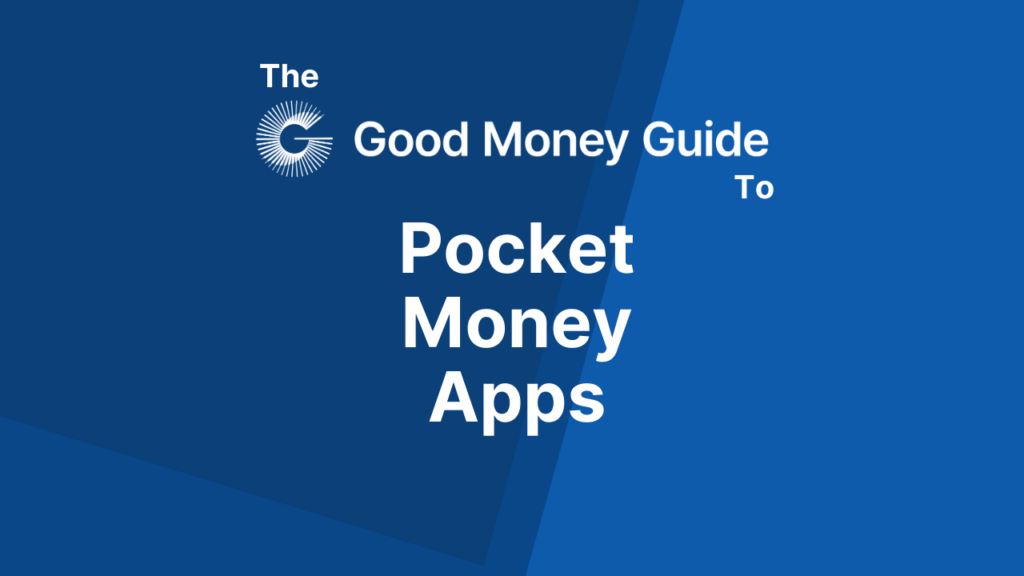We’ve put together this list of the best pocket money apps for children, with their costs, if they offer a junior ISA savings account and also provided some information on others that can help your children make more of their pocket money.
| Pocket Money App | Monthly Cost | JISA Available | Payment Network | Customer Reviews |
|---|---|---|---|---|
| GoHenry | £3.99/month for Everyday, £5.99/month for Plus, £9.99/month for Max (30-day free trial) | ✔️ | Visa | |
| Revolut <18 | Free; £4.99 card delivery fee (requires a parent to have a Revolut account) | ❌ | Mastercard | |
| Starling Kite | Free (requires a Starling Bank personal account) | ❌ | Mastercard | |
| Rooster Money | £1.99/month or £19.99/year (1 month free); Free for NatWest, RBS, or Ulster Bank customers | ❌ | Visa | |
| nimbl Account | £2.49/month or £28/year (1 month free) | ❌ | Mastercard | |
| Osper | £2.50/month (first month free) | ❌ | Mastercard | |
| HyperJar Kids | Free; £4.99 card delivery fee | ❌ | Mastercard |
Ten apps that can help children learn about money and investing
Teaching your children about money is an essential life lesson that will increase their chances of a financially secure future.
But if you’re one of the many parents who found homeschooling under lockdown akin to pulling teeth, it’s probably something you’ve steered clear of.
Explaining money concepts in a simple and engaging manner is difficult at the best of times, let alone when you’re competing with iPhones and tablets for your kid’s attention.
Fortunately, these handy money management apps for kids can help you teach the importance of saving and investing in a language that children understand.
So, whether you have a preschooler or a teenager, here are our top 10 money apps for teaching kids money management skills.
1. Best app for pre-schoolers: Toca Store
Toca Store is a game for young children that turns your phone or tablet into a shop. The shopkeeper (your child) selects five items to sell and chooses the price for each item by pressing a number from one to five. The customer (you) then buys items by dragging the right number of coins from their wallet onto the cash register. Once all the customer’s coins are spent, the app produces a receipt showing how the purchases all add up. The game only uses numbers up to five, so it’s great for preschoolers who are just getting to grips with numbers. There’s a ‘for parents’ section with some useful tips and instructions.
2. Best app for getting to grips with coins: Money Maths – GBP
Once your child gets a bit older, Money Maths – GBP will help them get used to recognising, adding and subtracting different coins. The app has three sections: maths arithmetic, for counting and subtracting coins; matching pairs, where your child matches sets of coins against their numeric values; and shopping, which involves making payments and calculating change. The app has five levels of difficulty and you can set a stopwatch to time your child’s performance.
3. Best app for learning about saving and spending: gohenry
gohenry is one of the best kids pocket money apps and is great for teaching your child about responsible spending and saving. It comes with a parent account, which lets you top up your child’s allowance and set spending limits. Your child gets a prepaid Visa debit card, which they can use in shops, online and to withdraw cash. You can set tasks for your child and, once completed, release pocket money to their card. Your child can also set savings targets. Aimed at children aged 6-18, you can add up to four users.
4. Best pocket money app: Rooster Money
Rooster Money is an allowance app that starts as a reward chart with stars and then progresses to a pocket money tracker. As well as tracking money, you can manage chores and create savings goals. The app lets you add pictures of the things your child is saving up for, which is a great incentive for diligent saving. Your child gets a simple statement showing how much money they’ve saved and how much they’ve spent. There’s also an optional prepaid Visa debit card, so your child can make real-life transactions online and in-store.
5. Best app for older savers: Otly!
Otly! is a great app for older children who want to take their saving a step further. It comes with two parts: the Otly! app for parents, which enables you to keep a record of your child’s allowance and track their spending; and Otly! Jr, which lets your child separate their pocket money into different saving pots. Your child can see graphs of how their savings will grow and get a countdown until the next pocket money day. They can also send you a request if they want to spend some of their money.
6. Best app for financial education: Gimi
Gimi combines a pocket money app and chores manager with financial education. Parents can set a recurring allowance along with chores for their child to complete. Kids can suggest tasks to top-up their weekly allowance and send picture proof when they’ve finished them. There are also three lessons on earning, saving and spending, which you and your child can work through together. The animated videos help bring these concepts to life in a child-friendly manner.
7. Best app for rewarding chores: iAllowance
The makers of iAllowance claim it has helped children complete more than 30 million chores. You can track the amount of allowance you owe each child and send reminders for them to finish chores. You can set up unlimited different piggybanks for each child and create rewards that can be cashed in when your child reaches the set goal. For younger children, you can create balances that use time or stars instead of money.
Free download from the Apple App Store
8. Best app for learning about budgeting: Savings Spree
Winner of a Parents’ Choice Gold Award, Savings Spree is a great way of learning about the importance of budgeting. It teaches kids how the choices they make each day can add up to big savings or big expenses. In each mini-game, your child can earn imaginary money through six rounds that test their financial knowledge and help them building money-saving skills. Aimed at children aged 7 and up, it also introduces the concept of investing for long term-goals.
Savings Spree is priced at £5.99 on the Apple App store
9. Best app for learning about investing: How The Market Works
How the Market Works is an online virtual stock exchange game that is great for older children and parents. You receive a virtual $100,000 which you can use to learn how the markets work and practice trading. The site contains quotes, charts, Wall Street analyst ratings, company news and financial statements, trading ideas, videos, glossaries, financial calculators, lesson plans, and more. It also includes access to an education centre. Users can create their own custom stock market contest and invite their classmates, friends and family to a friendly competition.
10. Best app for your teenage trader: PIGGYBANK Fantasy Stock Exchange
Supported by the London Stock Exchange, the PIGGYBANK Fantasy Stock Exchange is an online game just for kids. Each user gets £100 of PIGGYBANK cash and 10 free shares to start playing. Like a real stock exchange, your child selects the companies they’d like to buy shares in. The shares become part of your child’s fund and they are its fund manager. There’s an opportunity to become a star fund manager by being among those with the biggest fund value at the end of each game. The first prize is a £250 gift voucher. If your child doesn’t want to use all their money to buy shares, there’s a bank with real-time interest rates.
Free to download from the Apple App Store & Google Play.
You may also find out guide to adult investment apps helpful.

Richard is the founder of the Good Money Guide (formerly Good Broker Guide), one of the original investment comparison sites established in 2015. With a career spanning two decades as a broker, he brings extensive expertise and knowledge to the financial landscape.
Having worked as a broker at Investors Intelligence and a multi-asset derivatives broker at MF Global (Man Financial), Richard has acquired substantial experience in the industry. His career began as a private client stockbroker at Walker Crips and Phillip Securities (now King and Shaxson), following internships on the NYMEX oil trading floor in New York and London IPE in 2001 and 2000.
Richard’s contributions and expertise have been recognized by respected publications such as The Sunday Times, BusinessInsider, Yahoo Finance, BusinessNews.org.uk, Master Investor, Wealth Briefing, iNews, and The FT, among many others.
Under Richard’s leadership, the Good Money Guide has evolved into a valuable destination for comprehensive information and expert guidance, specialising in trading, investment, and currency exchange. His commitment to delivering high-quality insights has solidified the Good Money Guide’s standing as a well-respected resource for both customers and industry colleagues.
To contact Richard, please ask a question in our financial discussion forum.




